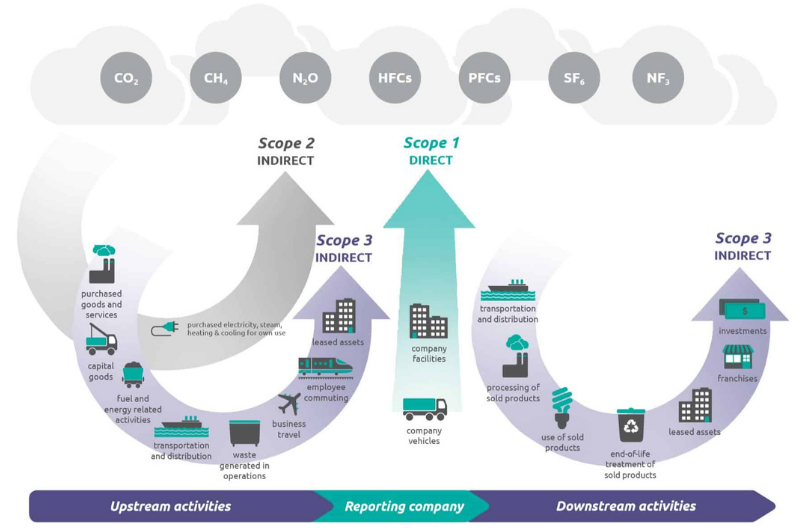In order to take GHG inventory monitoring a step further, the GHG Protocol also created the Product Life Cycle Accounting and Reporting Standard. This standard provides a methodology to understand the full life cycle emissions of products from a wide variety of industries. While Scope 3 of the GHG Protocol Corporate Standard accounts for emissions at the corporate level, the Product Standard, as the name suggests, calculates all the GHG emissions associated with the production, use and disposal of a specific product, from cradle to grave.
Since the GHG Protocol’s standards have been road-tested, companies are becoming more adept at calculating Scope 1 and Scope 2 emissions, as per a Science Based Targets initiative’s 2020 Annual Progress Report. However, while Scope 3 emissions can represent the largest source of emissions for companies, many companies still struggle with measuring Scope 3 and product-specific emissions across their value chains.
And this is causing a ripple effect that impacts a country’s pledges to fight climate change.
CORPORATE ENVIRONMENTAL ACTIVISM: CONCRETE ACTION OR LOFTY BRANDING?
The results of the Crowell & Moring survey examined how companies are truly addressing the pressures to improve their environmental stewardship, including curbing their GHG emissions. According to the report, 56% of the 225 executives surveyed did not even measure their carbon footprints.
Another damaging report: the New Climate Change Institute showed, in a recent study of 25 major corporations, which account for 5% of global GHG emissions, that companies set very weak goals and even exaggerate or misreport their progress. The New York Times also published an extensive exposé on what is really behind companies’ promises on climate change and how they monitor their carbon footprints. The article also points out that businesses in the same industry have vastly different GHG emissions records. As the New York Times writes:
“Slashing emissions is difficult. Businesses must reliably measure how much carbon dioxide and other greenhouse gases they are responsible for. […] The task gets even harder when companies begin the process of reducing so-called Scope 3 emissions…”
Targeted decarbonization using the GHG Protocol’s standards is extremely challenging—not only because it requires a transformational shift in the way companies conduct business but also for a myriad of other reasons, including:
- Their complex, multi-tiered value chains
- Limited exchange of emissions data across all stakeholders
- Lack of a standardized technology platform to capture and share accurate, granular and verified emissions data
- No consistent methodology to calculate and allocate emissions at the product level
However, some technologies are paving the way to resolve these challenges.
Carbon Tracking is a cloud-based solution, powered by OPTEL’s Intelligent Supply Chain platform. The Carbon Tracking solution acquires and tracks end-to-end carbon emissions data—both direct and indirect—from a supply chain. What’s more, the solution can provide visibility of verified primary emissions data at the product level and throughout the entire product life cycle.
As a result, companies can identify, in real time, their GHG emissions and tap into a wealth of analytics to pinpoint other means to reduce their carbon footprints. Data is easily accessed to help businesses prove compliance and their environmental performance with regulators, auditors, investors, the media, etc.
Corporations can therefore move from estimating Scope 1, 2 and 3 emissions based on industry averages and guesstimates to monitoring real emissions both upstream and downstream at the product level.
Interested in learning more about OPTEL’s Carbon Tracking? Download this brochure !


